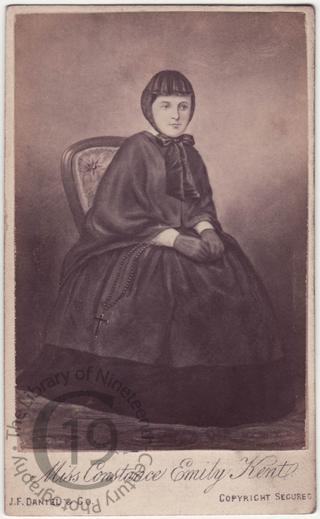
Constance Kent
A carte-de-visite showing an artist’s impression of child-murderer Constance Emily Kent, who in 1860 murdered her four-year-old half-brother, Francis Saville Kent. The child was found in an outside privy with his throat cut. A cause célèbre of the day, the crime became known as ‘the Road murder’, after the house (sometimes called Rode House or Road Hill House), near Frome in Somerset, where it was committed.
Initially, a nursemaid, Elizabeth Gough, was suspected, but the case against her was dropped for lack of evidence. Public interest was intense, the Times publishing ten reports between July, when the case opened, and December. Five years passed, before there was a dramatic turn of events when Constance Kent, the murdered child’s half-sister, volunteered a confession. Once more, there was widespread attention and the Times printed another thirteen reports between April and August of 1865.
Constance Kent was not hanged, but sentenced to life imprisonment. She served twenty years in jail, was released, and then disappeared from the records. In the 1970s it emerged that she had emigrated to Australia and become a nurse. She died there, aged 100, in 1944.
Produced, from an illustration, byJF Daniel and Company of 291, High Holborn, London.
See Kate Summerscale's bestseller 'The Suspicions of Mr Whicher' (2008) for a gripping account of the whole story.
Code: 123936




